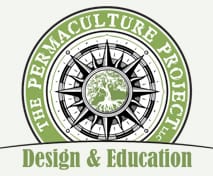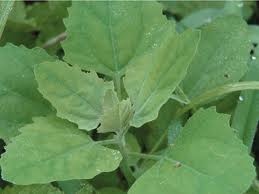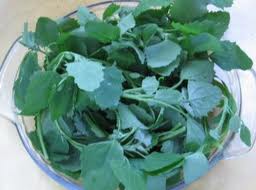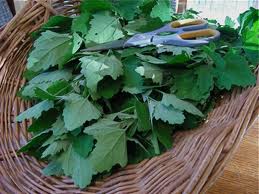Chenopodium Album: Lamb’s Quarters, Fat Hen
I expect that we will be harvesting lamb’s quarters here in Southern Illinois for 10 or 11 months this year. Because of our very mild winter the plants had an early kick start this spring. I have seen lamb’s quarters grow up to 10 feet tall in good organic soils (an indicator of where the fertility lies on your property). I have been eating the leaves, seeds and inflorescences of this miraculously mineral and protein rich plant for many years. The seeds can be sprouted during the winter in place of the standard alfala, clover, mung bean rotation. Of course, this plant, amongst other wild plants, can be juiced, the seeds made into a delicious porridge, and the greens prepared in countless ways (stir fry, steamed, added to salads in small quantities). A very close relative to quinoa, this member of the goosefoot family is difficult (the seed head is much larger on the quinoa) to distinguish from quinoa before full maturity.
From Plants for a Future:
“Leaves – raw or cooked. A very acceptable spinach substitute, the taste is a little bland but this can be improved by adding a few stronger-flavoured leaves. One report says that, when eaten with beans, the leaves will act as a carminative to prevent wind and bloating. The leaves are best not eaten raw, see the notes above on toxicity. The leaves are generally very nutritious but very large quantities can disturb the nervous system and cause gastric pain. The leaves contain about 3.9% protein, 0.76% fat, 8.93% carbohydrate, 3% ash. A zero moisture basis analysis is also available.
Edible seed – dried and ground into a meal and eaten raw or baked into a bread. The seed can also be sprouted and added to salads. The seed is very fiddly to harvest and use due to its small size. Although it is rather small, we have found the seed very easy to harvest and simple enough to utilize. The seed should be soaked in water overnight and thoroughly rinsed before being used in order to remove any saponins. The seed contains about 49% carbohydrate, 16% protein, 7% ash, 5.88% ash. Young inflorescences – cooked. A tasty broccoli substitute.
Figures in grams (g) or miligrams (mg) per 100g of food. Leaves (Dry weight)
• 260 Calories per 100g
• Water : 0%
• Protein: 24g; Fat: 5g; Carbohydrate: 45g; Fibre: 15g; Ash: 28g;
• Minerals – Calcium: 2300mg; Phosphorus: 500mg; Iron: 25mg; Magnesium: 0mg; Sodium: 0mg; Potassium: 0mg; Zinc: 0mg;
• Vitamins – A: 31583mg; Thiamine (B1): 0.67mg; Riboflavin (B2): 1.58mg; Niacin: 2.5mg; B6: 0mg; C: 0mg;
• Reference: [ 218]
• Notes: The figures are the median of a range given in the report.
Medicinal Uses
Anthelmintic; Antiphlogistic; Antirheumatic; Contraceptive; Laxative; Odontalgic.
Fat hen is not employed in herbal medicine, though it does have some gentle medicinal properties and is a very nutritious and healthy addition to the diet. The leaves are anthelmintic, antiphlogistic, antirheumatic, mildly laxative, odontalgic. An infusion is taken in the treatment of rheumatism. The leaves are applied as a wash or poultice to bug bites, sunstroke, rheumatic joints and swollen feet, whilst a decoction is used for carious teeth. The seeds are chewed in the treatment of urinary problems and are considered useful for relieving the discharge of semen through the urine. The juice of the stems is applied to freckles and sunburn. The juice of the root is used in the treatment of bloody dysentery. Food that comprises 25.5% of the powdered herb may suppress the oestrus cycle.
Dye; Soap.
A green dye is obtained from the young shoots. The crushed fresh roots are a mild soap substitute.
Cultivation details
An easily grown plant, succeeding in most soils but disliking shade. It prefers a moderately fertile soil. Tolerates a pH in the range 4.5 to 8.3. In moderate amounts this plant is a good companion for potatoes, corn and cucurbits. The plant responds directly to the magnesium content of the soil so it can be used to indicate the presence of that element. Fat hen is occasionally cultivated as a food crop, there is at least one named variety. Called ‘Magenta’ in reference to the colour of its leaves, it is considered by some people to be the best tasting of all potherbs.
Propagation
Seed – sow spring in situ. Most of the seed usually germinates within a few days of sowing. It is usually unnecessary to sow the seed since the plant is a common garden weed and usually self-sows freely in most soils.
“This European immigrant is an odorless, branching, annual herb, with stalked, opposite, simple leaves which are clammy-feeling, unwettable, and have a whitish coating on the underside. The first leaves are roughly diamond-shaped and somewhat toothed toward the point, and the later leaves are narrow and toothless.
Lamb’s-quarters was introduced to the U.S. as a pot-herb and now grows everywhere. It particularly likes disturbed soil, but it’s not above growing through the cracks in the sidewalk. It generally grows from 1 to 3 feet tall, though it may reach over twice that height under favorable conditions. There are many similar edible species in this genus. The rule is: if it’s odorless, it’s food, and if it has a resiny smell, it’s a spice.
A red tracing in the leaf means that spinach leaf miner larvae live there. It’s probably better not to eat those leaves.
Collect the young tender plants whole, and then when the stems become tough, collect just the leaves and tender tips. Do not collect Lamb’s-quarters growing in artificially fertilized or treated soils. It will absorb pesticides from the soil and is also prone to accumulate high levels of nitrates (in very much the same way as its’ relative, spinach). It also contains high amounts of oxalic acid (also like spinach) and should therefore be consumed in moderation.
The second photo is about the same view as the first, a month or so later. It now shows part of the lower branches. The new leaves are small and narrow and numerous branches have developed. The leaves can be collected up until the frost kills them, and they never turn bitter, but they do get much smaller later in the season.
Use the shoots, leaves and tips in any way that you might use spinach. It tastes a lot like spinach, only milder, with sort of a hint of peapods.
Lamb’s-quarters is very high in vitamin A, calcium, potassium, and phosphorus and is also a good source of protein, trace minerals, B-complex vitamins, vitamin C, iron, and fiber.
For long-term storage, I’ve read that the leaves may be dried, canned, or blanched and frozen. Also, in Japan, they preserve them with salt. But since they seem to keep almost forever in a vegetable bag in the crisper, I haven’t had any left that needed storing yet.
Between June and October, lots of tiny, green, unstalked flowers appear in terminal clusters and in the upper leaf axils. The flowers are also edible, and so are the seeds.
In the fall, the stem often becomes red-streaked, and eventually the flower clusters turn reddish-brown. This means the seeds are mature.
Each plant may produce tens of thousands of tiny, black, shiny seeds with rounded edges. If they seem dullish brown rather than shiny and black, it’s due to the papery covering.
It’s easiest to collect the seeds when the flower heads have already dried, in late fall or early winter. At this time, you can easily strip the seeds (and some chaff) from the stalks as they stand. You can also collect them while they’re still wet, which gives you the option of letting them dry somewhere (a paper bag is good) or going ahead with the threshing and winnowing while they’re fresh, if you’re really impatient. The penalty for impatience, though, is that it’s a lot more work.
When you’re done with all that, the more or less cleaned seeds (depending on how fussy you are) can be cooked as a cereal, ground into flour to mix with wheat flour, or used as you might use other seeds in cooking (muffins come to mind). They are high in protein, calcium, phosphorus, potassium, and niacin. I’ve added both ground and unground seeds to yeast bread and the result is quite good: a heartier, darker bread, with the unground seeds acting almost exactly like poppy seeds. I’ve also sprouted the seeds. They produce a very delicate, reddish-brown sprout, good in salads or cooked very briefly in stir-fries.
Medicinally, lamb’s-quarters has been used to treat various symptoms attributable to nutritional deficiencies. It’s also said to have sedative and refrigerant properties, and people have used the poulticed leaves to soothe burns.
Many wild birds eat the seeds, as do chipmunks and squirrels, and the plants provide food for butterflies, as well as for other mammals (aside from human ones). Be sure to leave some for everybody.
If you happen to have lamb’s-quarters where you don’t want it, pull it up or hoe it down before it goes to seed. Better yet, use it in dinner.”




